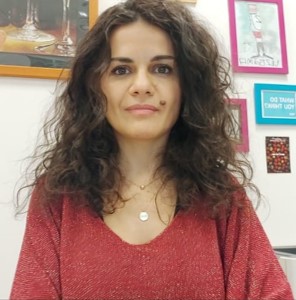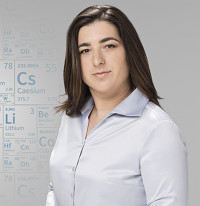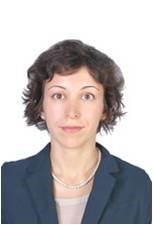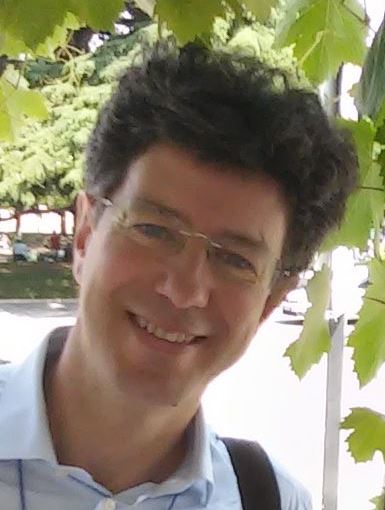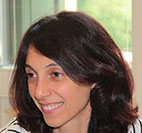Studying at the University of Verona
Here you can find information on the organisational aspects of the Programme, lecture timetables, learning activities and useful contact details for your time at the University, from enrolment to graduation.
Academic calendar
The academic calendar shows the deadlines and scheduled events that are relevant to students, teaching and technical-administrative staff of the University. Public holidays and University closures are also indicated. The academic year normally begins on 1 October each year and ends on 30 September of the following year.
Course calendar
The Academic Calendar sets out the degree programme lecture and exam timetables, as well as the relevant university closure dates..
| Period | From | To |
|---|---|---|
| I semestre | Oct 1, 2019 | Jan 31, 2020 |
| I° semestre - 3° anno | Oct 28, 2019 | Jan 31, 2020 |
| II semestre | Mar 2, 2020 | Jun 12, 2020 |
| Session | From | To |
|---|---|---|
| Sessione invernale d'esame | Feb 3, 2020 | Feb 28, 2020 |
| Sessione estiva d'esame | Jun 15, 2020 | Jul 31, 2020 |
| Sessione autunnale d'esame | Sep 1, 2020 | Sep 30, 2020 |
| Session | From | To |
|---|---|---|
| Sessione di laurea estiva | Jul 20, 2020 | Jul 20, 2020 |
| Sessione autunnale di laurea | Oct 20, 2020 | Oct 20, 2020 |
| Sessione autunnale di laurea - dicembre | Dec 11, 2020 | Dec 11, 2020 |
| Sessione invernale di laurea | Mar 19, 2021 | Mar 19, 2021 |
| Period | From | To |
|---|---|---|
| Festa di Ognissanti | Nov 1, 2019 | Nov 1, 2019 |
| Festa dell'Immacolata | Dec 8, 2019 | Dec 8, 2019 |
| Vacanze di Natale | Dec 23, 2019 | Jan 6, 2020 |
| Vacanze di Pasqua | Apr 10, 2020 | Apr 14, 2020 |
| Festa della Liberazione | Apr 25, 2020 | Apr 25, 2020 |
| Festa del lavoro | May 1, 2020 | May 1, 2020 |
| Festa del Santo Patrono | May 21, 2020 | May 21, 2020 |
| Festa della Repubblica | Jun 2, 2020 | Jun 2, 2020 |
| Vacanze estive | Aug 10, 2020 | Aug 23, 2020 |
Exam calendar
Exam dates and rounds are managed by the relevant Science and Engineering Teaching and Student Services Unit.
To view all the exam sessions available, please use the Exam dashboard on ESSE3.
If you forgot your login details or have problems logging in, please contact the relevant IT HelpDesk, or check the login details recovery web page.
Should you have any doubts or questions, please check the Enrollment FAQs
Academic staff

Boselli Maurizio
 maurizio.boselli@univr.it
maurizio.boselli@univr.it
 3478344185
3478344185
 lorenzo.meneghini@univr.it
lorenzo.meneghini@univr.it
 chiara.nardon@univr.it
chiara.nardon@univr.it
Sandri Marco
 marco.sandri@univr.it
marco.sandri@univr.it
Study Plan
The Study Plan includes all modules, teaching and learning activities that each student will need to undertake during their time at the University.
Please select your Study Plan based on your enrollment year.
1° Year
| Modules | Credits | TAF | SSD |
|---|
2° Year activated in the A.Y. 2020/2021
| Modules | Credits | TAF | SSD |
|---|
3° Year activated in the A.Y. 2021/2022
| Modules | Credits | TAF | SSD |
|---|
| Modules | Credits | TAF | SSD |
|---|
| Modules | Credits | TAF | SSD |
|---|
| Modules | Credits | TAF | SSD |
|---|
Legend | Type of training activity (TTA)
TAF (Type of Educational Activity) All courses and activities are classified into different types of educational activities, indicated by a letter.
Organic Chemistry (2019/2020)
Teaching code
4S00091
Credits
6
Language
Italian
Scientific Disciplinary Sector (SSD)
CHIM/06 - ORGANIC CHEMISTRY
The teaching is organized as follows:
Teoria
Laboratorio [Laboratorio 1° turno]
Laboratorio [Laboratorio 2° turno]
Learning outcomes
THEORY: The aim of the course is to give to the student a robust background of Organic Chemistry, in order to discuss and solve problems in several environments (from the Organic and agricultural Chemistry to the biochemistry and oenology). The student must be able to assign the right IUPAC name to each molecule under investigation and to predict its chemical-physical properties and reactivity. The students are also asked to establish a relationship between the nature of the functional groups studied during the course and such properties. LAB: Thanks to this course the student will aquire the manual skills practice necessary in a common chemistry or eonology laboratory. He will consolidate the dexterity already aquired during the general chemistry laboratory course. The experimantal organic chemistry carried out during this course will be also useful in order to consolidate several theoretical crucial concepts learnt during the main course.
Program
------------------------
MM: teoria
------------------------
The syllabus of the course is as follows: -Introduction -hybridation and bonds -acids and bases -alkanes -alkenes -alkynes -stereochemistry -alkyl halides -alchols -thiol and sulphides -ethers and epoxides -organometallic compounds -benzene and aromatic compounds -phenols e polyphenols -aldehydes and ketones -carboxylic acids and their derivatives -aromatic heterocycles -amines -aminoacids and proteins -sugars
------------------------
MM: laboratorio
------------------------
4 laboratory experiments will be carried out (up to 4 hours each). In particular: 1) qualitative test on reducing sugars 2) silica gel and TLC cromatography on a spinach extract 3) acid-base titration of aminoacids 4) optical rotation of chiral substances For each experiment the student must write a questionnaire.
------------------------
Bibliography
| Activity | Author | Title | Publishing house | Year | ISBN | Notes |
|---|---|---|---|---|---|---|
| Teoria | M. Loudon | Chimica Organica (Edizione 1) | EdiSES | 2010 | ||
| Teoria | W. H. Brown- T. Poon | Introduzione alla Chimica Organica, IV° edizione (Edizione 4) | EdiSES | 2014 |
Examination Methods
------------------------
MM: teoria
------------------------
For the students enrolled since A.A. 2016/2017, the final examination consists of a written part (multiple choice test). The student will solve 22 questions regarding the whole programme. 18 questions are reltaed to theoretical concepts. For these questions the student can obtain 1 point for each right answer, -0.2 for each wrong answer and 0 point for each missing or canceled answer. 4 questions are comprehensive execises. the student can obtain 3 points for each right answer, -0.6 for each wrong answer and 0 point for each missing or canceled answer. To this score it will be added or subtracted 2 points related to the evaluation of the laboratory course. The final mark will be expressed in thirtieths. In order to take the final examination the students must have taken part of the majority of the laboratory course (at least to the 75%). All students reaching the mark of 17 have the right to do an oral part, with the aim to obtain the final mark of 18. For the students enrolled before A.A. 2016/2017, the final examination consists of a written part (multiple choice test). The student will solve 30 questions regarding the whole programme. The student can obtain 1 point for each right answer, -0.2 for each wrong answer and 0 point for each missing or canceled answer. The final mark will be expressed in thirtieths. All students reaching the mark of 17 have the right to do an oral part, with the aim to obtain the final mark of 18. These rules apply for attending students as well as non attending ones.
------------------------
MM: laboratorio
------------------------
For this course is not planned any examination. However, the teacher will give a score to each student based on the laboratory activity. This score will be added or subtracted to the score obtained at the final examination of the main course of organic chemistry. Each experiment will be assessed on the basis of several aspects: good behavior of the student in the lab, his manual practise, his curiosity or interest and the quality of the questionnaire. The maximum score for each experiment is 0.5 points (and -0.5 the minimum score). Therefore, the student will obtain, at the end of the laboratory course, a maximum score of 2 points or a minimum score of -2 points.
------------------------
Type D and Type F activities
Modules not yet included
Career prospects
Module/Programme news
News for students
There you will find information, resources and services useful during your time at the University (Student’s exam record, your study plan on ESSE3, Distance Learning courses, university email account, office forms, administrative procedures, etc.). You can log into MyUnivr with your GIA login details: only in this way will you be able to receive notification of all the notices from your teachers and your secretariat via email and soon also via the Univr app.
Graduation
Attendance
As stated in the Teaching Regulations for the A.Y. 2022/2023, attendance is mandatory for practical and laboratory activities, unless otherwise determined by the Teaching Committee.
Documents
| Title | Info File |
|---|---|
|
|
pdf, it, 121 KB, 18/10/23 |








